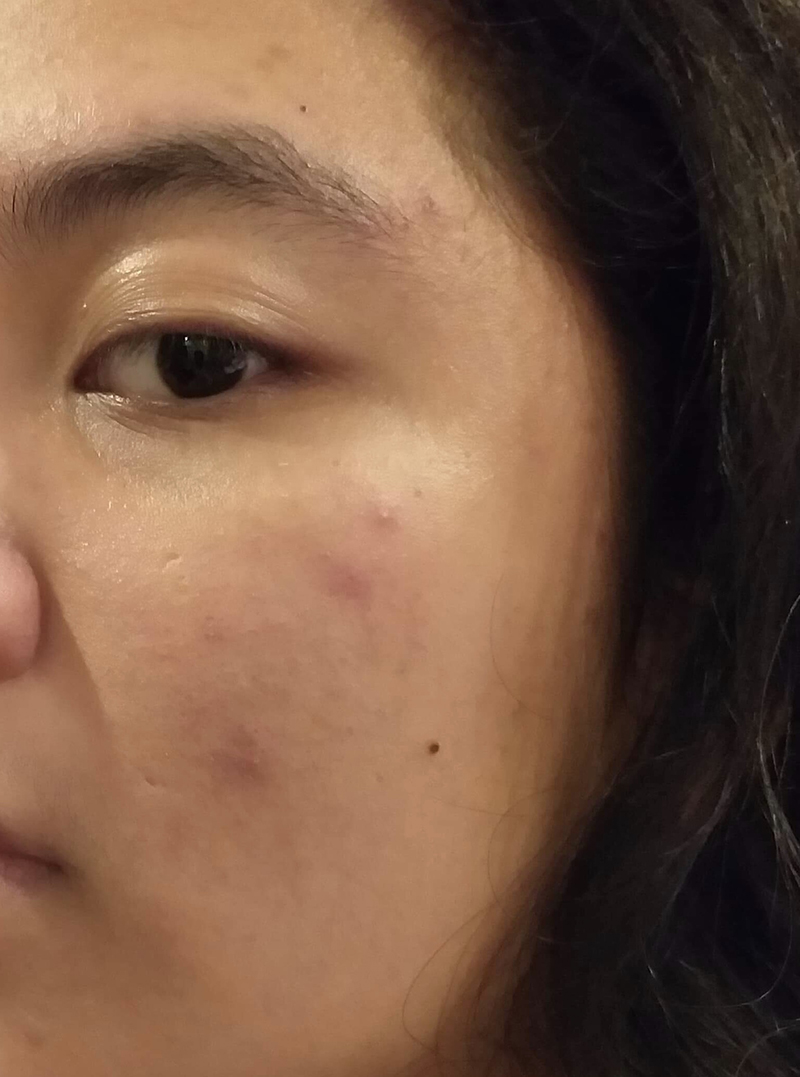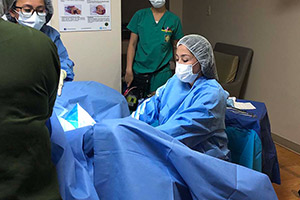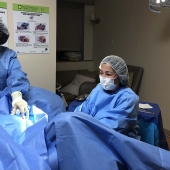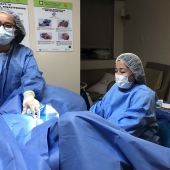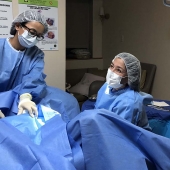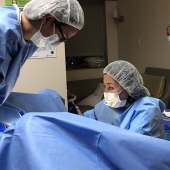Patient Testimony from Mary Grace Batario Care of Dra. Rebecca Singson
I underwent Robotic Surgery to remove the dermoid cyst in my remaining ovary last August 30, 2018. At my young age of 25, jumping into conclusions such that early menopausal or even for not having a possibility of having a child in the future, it’s been tough for me to know the possibilities of removing my remaining ovary due to a huge sized dermoid cyst. I prayed for a good doctor that can save my last and remaining ovary (since my right ovary has been removed when I was 18 with same kind of cyst). We even searched online for top recommended OB-Gynes near Laguna and we’ve found Dr. Rebecca Singson.
Remembering our first meeting with Dr. Rebecca, together with her very accommodating secretary/nurses (Ms. Jessie and Ms. Joana @ ASIAN), and with the very relaxing ambiance of her clinic, everything seems to be relaxed and perfect. She also took time to explain the possible reasons of having such condition and how it could have been avoided; and, after hearing her explanation, it seems that I have attended a short science class with her. That’s how she explained clearly the details. Dr. Rebecca showed sympathy for my condition and gave me hopes in saving my remaining ovary. The fact of having a big cyst inside your ovary is already distressing but after talking to her everything becomes lighter.
For me Robotic Surgery is really safe and very suitable procedure in my case. Still, Dr. Rebecca is very honest to disclose worst possibilities that may happen depending on the conditions inside my belly — having Exlap procedure with bigger incisions and not being able to save my ovary, and reassured to me that she will do her best.
And thanks to God, my ovary was saved. Considering the size of the cyst, it was a good decision to choose robotic surgery as recommended by Dr. Rebecca Singson. Four hours after the operation, I was able to walk already and go to restroom and pee without catheter and pain. I can already eat meals—no restrictions. I stayed at the hospital for just 1 day after the operation. I only have 4 small incisions with very minimal stomach pain and discomfort due to the gas blown inside my belly (which is normal as explained before the procedure) and with minimal shoulder pain as well. After 20 days, I was able to go back to work.
I am overwhelmed with Dr. Rebecca’s proficiency. It’s been 4 weeks since my operation, thanks to God I have been able to underwent robotic surgery. My ovary was saved and it only took weeks for me to feel better and go back to some of my daily activities.
I would like to thank Dr. Rebecca Singson and all the medical team who assisted me throughout the operation and treatments. Thanks to her clinic secretaries/nurses Ms. Joana, Ms. Jessie and Ms. Karen for their friendly assistance and accommodation.
To God be all the glory!!!
Patient Testimony from Mercedes Bertschi
Dr. Rebecca Singson is an amazing doctor. I have been really scared and anxious about my medical condition and she took the time to explain what needs to be done and provides valuable advice and options. I thank God for finding her. It’s not often easy to find a good doctor who’s compassionate and skillful at the same time. Her staff Ms. Karen was very helpful and kind.
Finally, for those people who have been suffering from Multiple Myomas or similar condition. YOU ARE NOT ALONE. More OPTIONS are now available for you. I highly recommend Robotic Surgery procedure because this type of surgery is minimally invasive and the recovery time is extremely fast.
Mercedes Bertschi
Dr. Rebecca Singson’s Patient
(Who underwent Robotic-Assisted Procedure)
First ever Robotic Pediatric Surgery in the Phil.
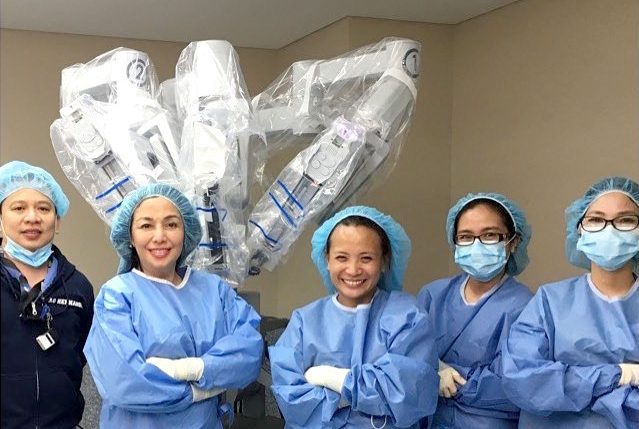
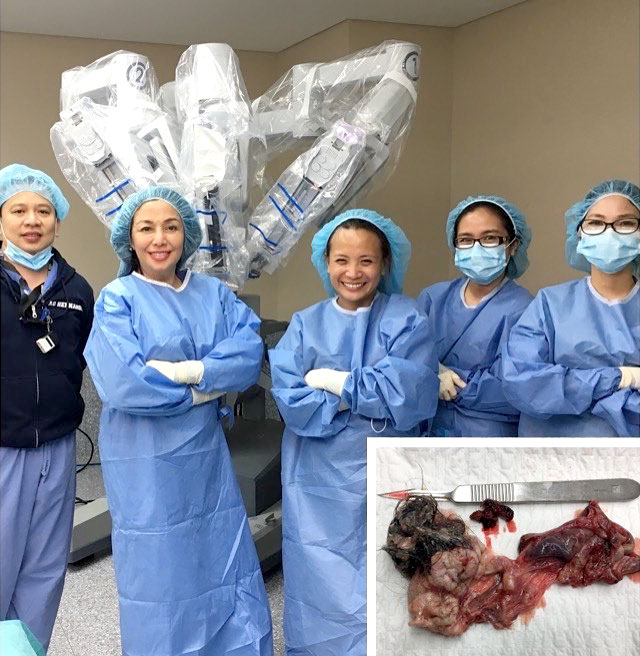
The first ever Pediatric Robotic Surgery was performed at the St Luke’s Global City Medical Center on June 13, 2017! This was performed on an 11 year old patient to remove an 8 cm Dermoid Cyst from the right ovary . It was full of hair, cartilage and oily sebum!! (L-R Dr Alet Hernandez, Anes, Dr Rebecca Singson, main surgeon assisted by Dr Angelica Chua and Dr Bianca Rojas w the robotic team of nurses, Kim Llanes and Berna Borneo (the latter not in the photo) .
Painless Vaginal Delivery

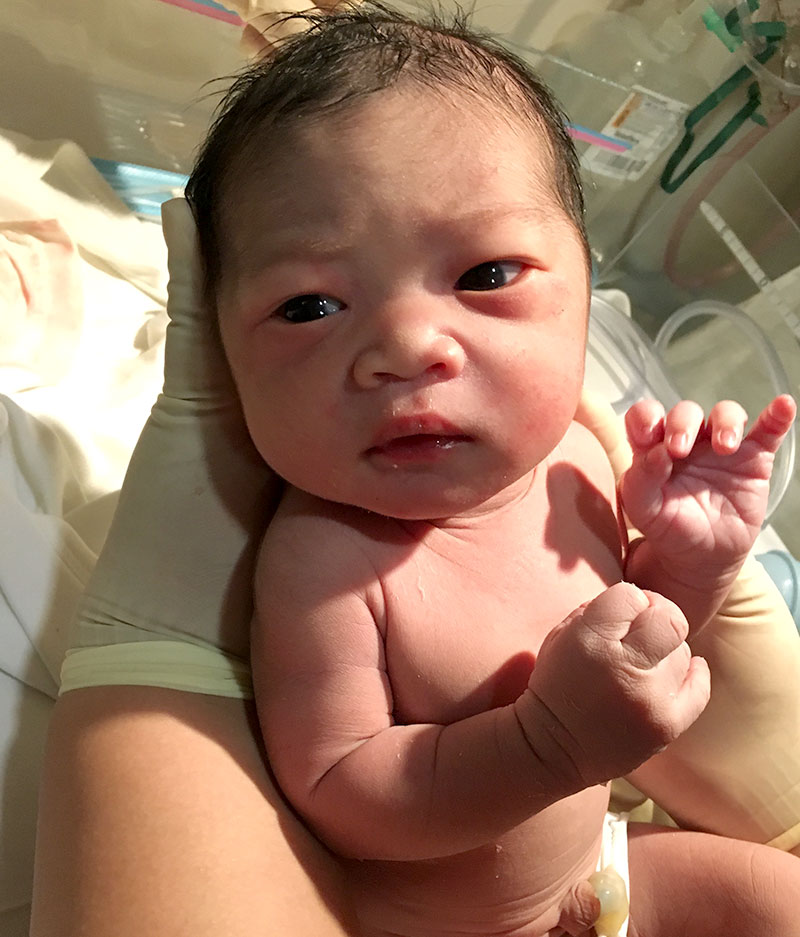
After a grueling day topped by a challenging robotic surgery, you’re ready to hit the sack and rest your weary body….then suddenly a mommy goes into labor since a baby boy decides to arrive on earth. In the first minute of life, he stares at you, following your voice, with his eyes wide open and with his the left pinky up (yes, his pinky finger, notice?) I completely forgot my fatigue and ended up marveling at the miracle of life I am so privileged to constantly be a part of.
Fetal Macrosomia
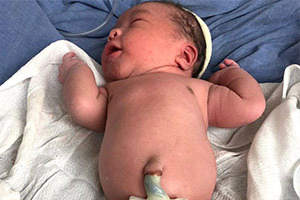
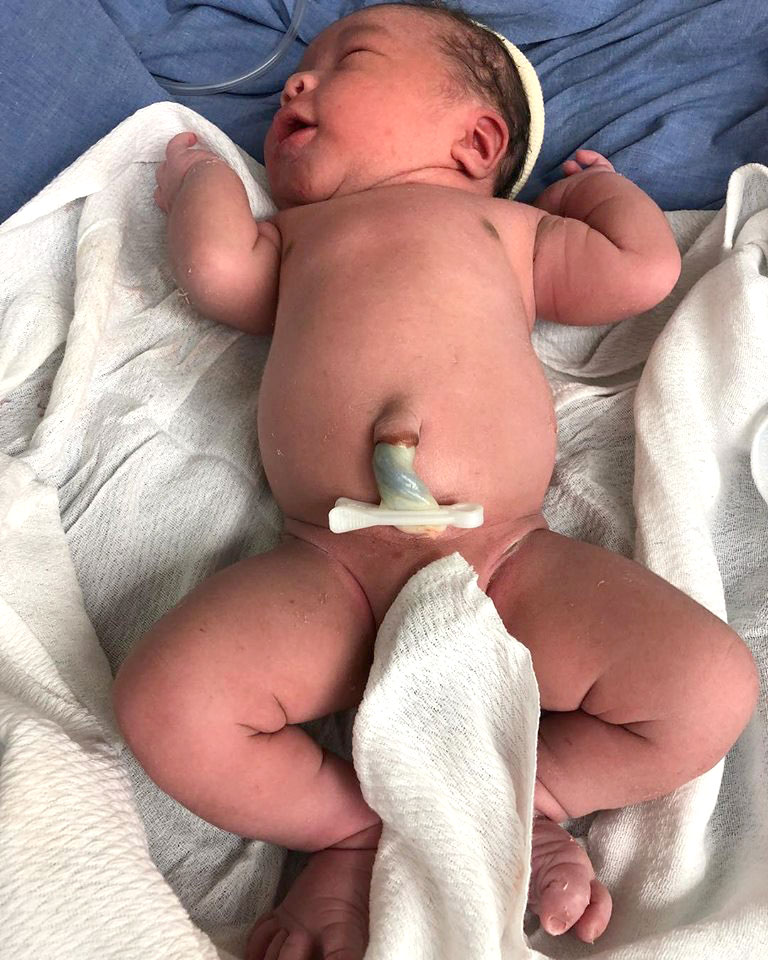
Mommy Pea was 5’2 with a strong family history of diabetes and so mom developed Gestational Diabetes early in pregnancy and had to be on insulin. She tried to labor without anesthesia since she was scared of epidural anesthesia. You see, Mommy Pea has slipped discs from several falls while ice skating in Japan and so she vehemently wanted to avoid any anesthesia on her spine.
As it turns labor was too painful and so she needed epidural anesthesia which, thankfully, there was no trouble inserting. But later there was no choice but to even give spinal anesthesia when the epidural started to get patchy and Mommy Pea needed an emergency C section! So much for someone who was trying to protect her spine. But thanks to expert anesthesiologists it all went well! In the end, it was no small wonder the Baby Boy Peacock couldn’t get out the normal way since he was 8 lbs 3 oz (3780g)! A Little Buddha but too HUGE a cutie for 5’2 Mommy Pea!
Cesarean section of a 27-week fetus
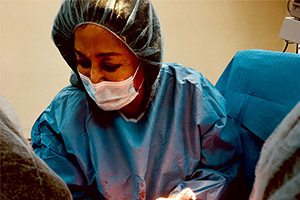
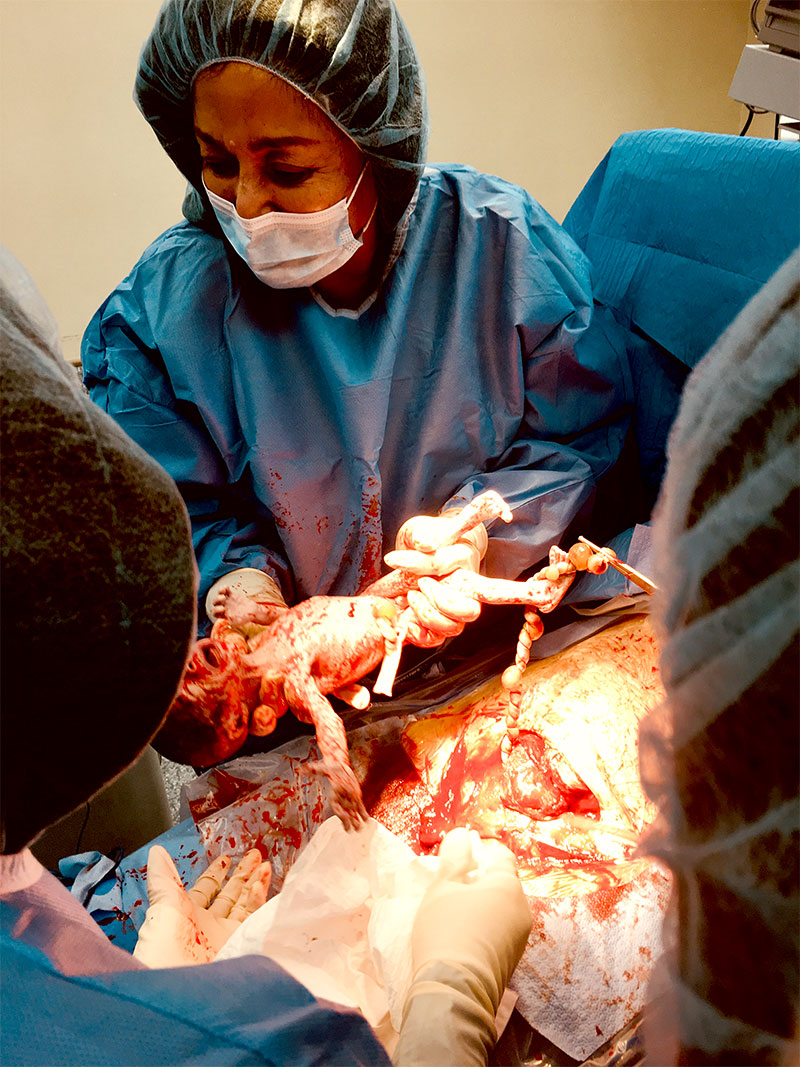
Cesarean section of a 27-week fetus whose mother was an extremely high risk patient with end-stage kidney failure prior to pregnancy. It was a major challenge with multi-specialty care all throughout her pregnancy. Finally, the uncontrolled hypertension made the team decide to bring out the baby by Cesarean section to a safer environment outside the mother’s womb . It was a miracle to have even brought the pregnancy this far! The baby did well and is now a healthy baby boy!
Honeymoon Cystitis
Rebecca B. Singson, M.D, FPOGS, FACS, PSCPC
WHAT IS HONEYMOON CYSTITIS?
This is actually a form of urinary tract infection which is common during the honeymoon or immediately after. Cystitis means inflammation of the bladder and it is usually due to infection. Bacteria are often pushed mechanically up the urethra and into the bladder during sexual contact. This primarily affects the woman and the symptoms are usually that of frequency of urination, burning sensation during urination or waking up more than once while asleep to urinate. Very often, it is caused by the E.coli bacteria from the anus which gets dragged towards the vagina and urethra, and finds its way through the urethra’s tube passageway to get to your bladder, thus causing infection of the bladder. Sometimes, when the infection erodes a blood capillary in the bladder, you may even see bloody urine.
The male urethra, being longer, is not usually affected. The term ‘honeymoon’ was applied because, in the past, this was expected to be the time of first intercourse, which is no longer the norm. Of course, urinary tract infection after sex occurs at many times beyond the traditional ‘honeymoon’ – from the onset of sexual activity into old age.
HOW IS IT TREATED AND HOW CAN IT BE AVOIDED?
It is, however, easily treated with a 3-day antibiotic and the symptoms can resolve within a few days. For prevention, urinate immediately after sexual contact to discourage bacteria from going up to the bladder, wash in a front to back direction to avoid contaminating the vagina and urethra with organisms coming from the anus, and never hold your urine when you feel like voiding so you don’t encourage the bad bacteria to adhere to the bladder walls and multiply.
CAN ORAL OR RECTAL SEX CAUSE URINARY TRACT INFECTION?
Yes. The most common cause of urinary tract infection in 85% of cases is E coli. E. coli can be a normal resident in the mouth.1 In 10% of cases UTI is caused by Klebsiella, Proteus, Pseudomonas and Enterobacter. Pseudomonas may or may not be found in the mouth. In less than 5% of cases, UTI can be caused by Staph aureus, enterococcus, fungi and others. Both Staph aureus and enterococcus are normal residents of the mouth.1 Having oral sex introduces these bacteria to the urethra which can creep up to the bladder and induce infection.
Rectal sex can definitely induce UTI because the rectum is ridden with E. coli. The potential is even heightened if the male, after rectal sex, performs vaginal intercourse without adequate washing.
I KEEP GETTING URINARY TRACT INFECTION EACH TIME AFTER SEXUAL CONTACT, WHAT CAN I DO?
Up to 20 percent of young women with acute cystitis develop recurrent UTIs sexual intercourse has definitely been linked to be a cause. When these episodes recur, the organism causing it should be identified by urine culture and then documented to help differentiate between relapse (infection with the same organism) and recurrence (infection with different organisms). Fortunately, most recurrent UTIs in young women are uncomplicated infections caused by different organisms. It has been found that there may be some value in taking cranberry juice or tablets
Studies show that cranberry juice can reduce bacteria levels and discourage new bacteria from taking hold in the urinary tract. (Drinking cranberry juice won’t cure an existing infection, though, so if you’re having symptoms, you still need to see your doctor immediately to get a prescription for antibiotics.)
Recommended doses range from 90 to 480 milliliters (3 to 16 ounces) of cranberry cocktail twice daily, or 15 to 30 milliliters of unsweetened 100% cranberry juice daily. 300 milliliters per day (10 ounces) of commercially available cranberry cocktail (Ocean Spray®) has been used in well-designed research.
Other forms of cranberry used include capsules, concentrate and tinctures. Between one and six 300 to 400 milligram capsules of hard gelatin concentrated cranberry juice extract, twice daily by mouth, given with water 1 hour before meals or 2 hours after meals has been used.
Honeymoon cystitis can turn a lovely honeymoon into a wretched one. Be aware of it and take measures to prevent it to keep your honeymoon memorable and not miserable.
The following tips will help you prevent UTIs:
- After a bowel movement, wash and wipe yourself in a front to back direction to prevent bacteria from the stools from contaminating the urethra. Use your forefinger and middlefinger for the vaginal area and the ring and pinky fingers for the anal area to avoid contamination.
- Wash with lactic acid based vaginal wash (not soap since it is the wrong ph for the vaginal) before intercourse and urinate immediately after intercourse to prevent the organism from ascending through the ureter to the bladder.
- Avoid douching because it mechanically removes your protective bacteria, thus, making you more prone to infections.
- Avoid feminine sprays, powders and soaps that can irritate your urethra and genitals and make them a better breeding ground for bacteria.
- Never ignore your urge to pee. Keep the urine in the bladder encourages bacterial multiplication and increases the chances of the bacteria adhering to the lining of the bladder causing infection.
- Drink plenty of water, at least eight 8-ounce glasses a day to keep urine dilute.







